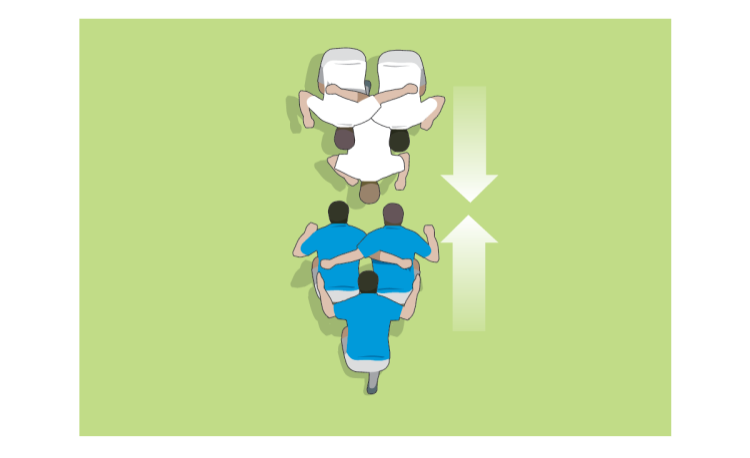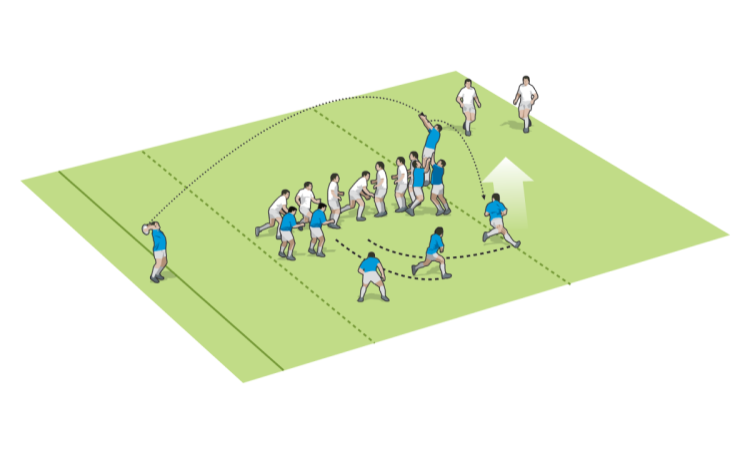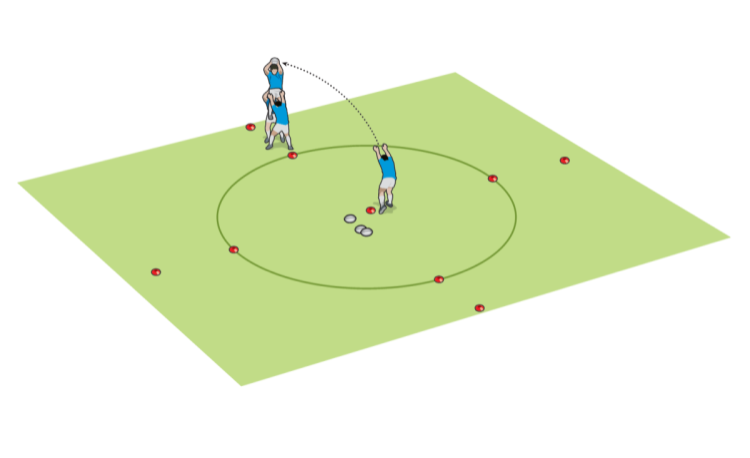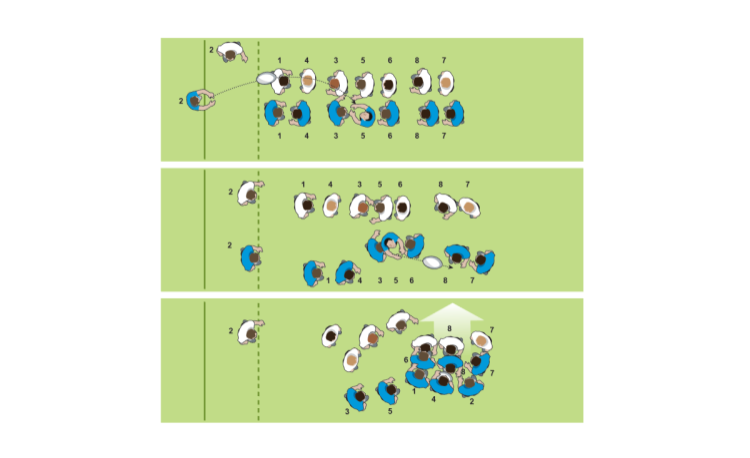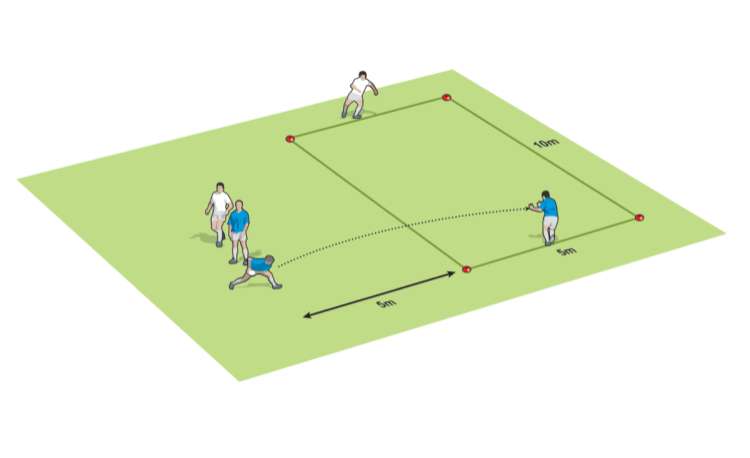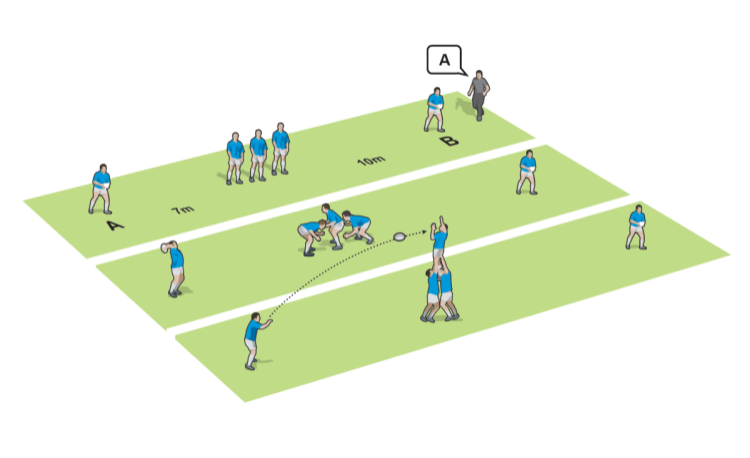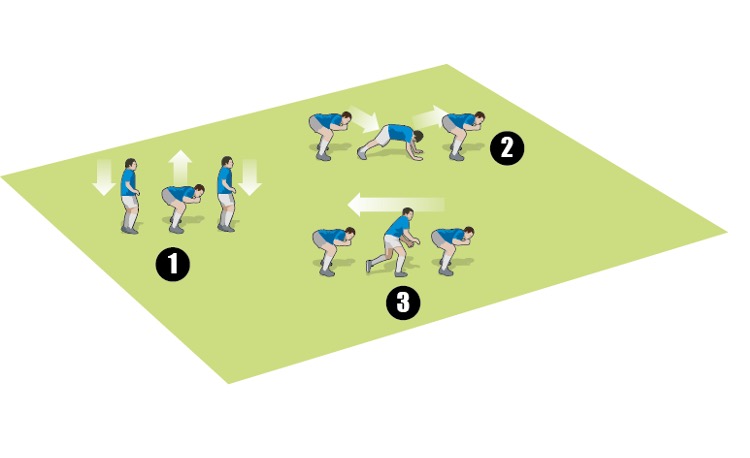You are viewing
1 of your 2 free articles
Clever wins at the front of the lineout
Scrums & Lineoutsby Dan Cottrell
Most teams are unprepared to defend the front of the lineout so when used as a surprise tactic, attacking the 5m channel can be highly effective.
The key is deceiving opponents and disguising the point of attack. The pod at the back must keep the defence guessing where the intended target is. If the opposition do not move as planned, then be prepared to change the call.

Set a full lineout with two distinct pods of three with a big gap between them and a tail gunner (the player at the back). To initiate the lineout, pod 1 moves back quickly as far as it can and the receiver moves with it.
The defending jumper and supporters have followed pod 1 back. The pod 1 jumper jumps supported from behind. The front supporter turns quickly and receives a flat throw at the front of the lineout. Supported by the hooker, he attacks.


Set the lineout with your strongest runner in the tail gunner position. Just before the ball is thrown, the receiver and tail gunner swap places. Pod 1 moves back to create space.
The pod 1 jumper jumps supported from behind, the front support player receives a short throw and pops the ball to the receiver running at pace into the 5m channel.

The key is deceiving opponents and disguising the point of attack. The pod at the back must keep the defence guessing where the intended target is. If the opposition do not move as planned, then be prepared to change the call.
Option 1

Set a full lineout with two distinct pods of three with a big gap between them and a tail gunner (the player at the back). To initiate the lineout, pod 1 moves back quickly as far as it can and the receiver moves with it.
The defending jumper and supporters have followed pod 1 back. The pod 1 jumper jumps supported from behind. The front supporter turns quickly and receives a flat throw at the front of the lineout. Supported by the hooker, he attacks.

Option 2

Set the lineout with your strongest runner in the tail gunner position. Just before the ball is thrown, the receiver and tail gunner swap places. Pod 1 moves back to create space.
The pod 1 jumper jumps supported from behind, the front support player receives a short throw and pops the ball to the receiver running at pace into the 5m channel.

Newsletter Sign Up
Coaches Testimonials

Gerald Kearney, Downtown Las Vegas Soccer Club

Paul Butler, Florida, USA

Rick Shields, Springboro, USA

Tony Green, Pierrefonds Titans, Quebec, Canada
Subscribe Today
Be a more effective, more successful rugby coach
In a recent survey 89% of subscribers said Rugby Coach Weekly makes them more confident, 91% said Rugby Coach Weekly makes them a more effective coach and 93% said Rugby Coach Weekly makes them more inspired.
Get Weekly Inspiration
All the latest techniques and approaches
Rugby Coach Weekly offers proven and easy to use rugby drills, coaching sessions, practice plans, small-sided games, warm-ups, training tips and advice.
We've been at the cutting edge of rugby coaching since we launched in 2005, creating resources for the grassroots youth coach, following best practice from around the world and insights from the professional game.
More from us
© 2023 Rugby Coach Weekly
Part of Green Star Media Ltd. Company number: 3008779
We use cookies so we can provide you with the best online experience. By continuing to browse this site you are agreeing to our use of cookies. Click on the banner to find out more.




